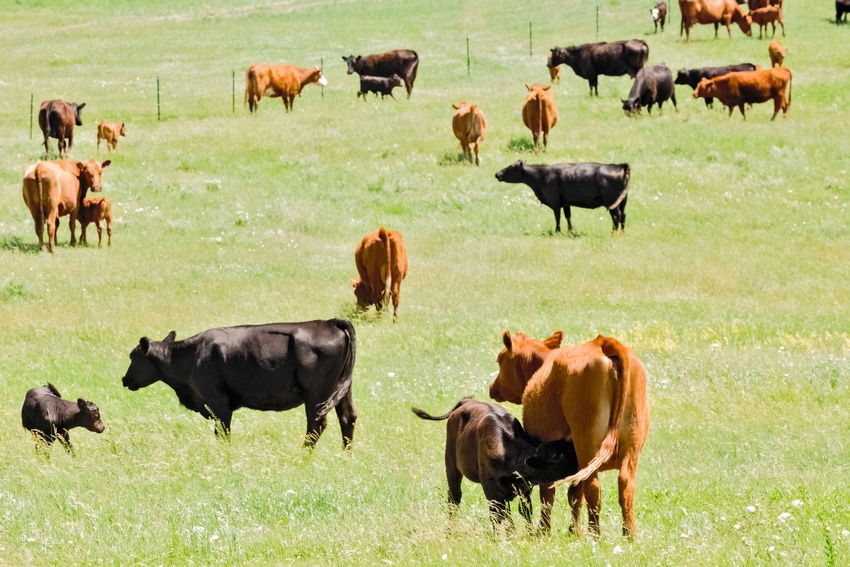U.S. beef industry needs additionally capacity to grow and weather challenges.

We’ve all been through some incredible times over the course of the last several months, CattleFax chief executive officer Randy Blach told attendees of the Texas & Southwestern Cattle Raisers Assn. virtual convention this week. “I’ve never seen anything quite like this,” he said, referring to the supply chain disruptions and subsequent market volatility that occurred after COVID-19 emerged in the U.S.
More than half of beef consumption prior to the COVID-19 pandemic took place at foodservice establishments but was subsequently cut off with stay-at-home orders, leaving markets scrambling to retool transportation, delivery and logistics in order to move more product back to retail.
“Looking back on it, I think the industry has done a tremendous job in being able to navigate some of the most difficult landscapes that any of us have ever come through,” Blach said.
In the spring, he said markets priced in the worst demand seen in more than 50 years because they didn’t know how long the government was going to keep businesses shut down or schools closed.
From February through May, the U.S. industry placed a million fewer cattle into feedyards as a result of not having the capacity to put those animals on feed, but lower placements totally offset the backlog of cattle that occurred, he explained.
As for the outlook, Blach expects a pretty open winter across key cattle feeding regions, with slightly warmer weather and more normal temperatures.
“Nothing tells us that we’re moving into another drought cycle, but we are going to continue to operate in a drier situation that we’ll have to navigate for the next 12-24 months,” he said.
Relative to the cattle situation and the cattle numbers, Blach said there have "really not been very many surprises. Cattle numbers bounced back, as we anticipated they would.”
Blach said a key item to note is that the industry has taken out the long-term downtrend in the cattle inventory numbers that started with a peak in the mid-1970s, which is “a positive situation.”
Looking down the road, the cow herd is shrinking.
“Last year we were down about 350,000 head; we’re going to be down 300,000-350,000 head again this year, it looks like,” he said.
Based on the dryness in the West and not really generating enough profitability for cow/calf producers, Blach said to “anticipate we’re likely going to see one more year of downsizing in 2021.”
Blach said it’s not unfathomable that the U.S. could see a million fewer beef cows by January 2021 or January 2022 versus just two years ago. “That’s what you need to be anticipating.”
However, if the industry can get some additional packing capacity, “that will allow our industry to grow some,” he said.
“We need to see some additional harvest capacity. The last 12 months has been a good example of that, with the Tyson [Holcomb, Kan., beef plant] fire that we experienced last August, and then we followed it up with the issues we’ve had with COVID-19," Blach said. "The industry really is vulnerable in that one area.”
Adding more capacity will also allow a little more profitability to flow back throughout the industry, he said.
Industry starting to normalize
Placements prior to June were down by 1 million, but placements have been up 300,000 head since June. Blach forecasted September placements to be about even with year-ago levels.
“So, things are starting to normalize. Feedyards still have a lot of cattle on feed, but we’re starting to work through some of this backlog,” he said.
Cattle on feed numbers are still elevated, which Blach said is no surprise, given the fact that the industry couldn’t place cattle in the spring.
As such, he said there will be plenty of cattle on feed for the next six to eight months and bigger year-over-year declines in cattle on feed numbers will likely be seen into the middle of next year.
“From the middle of next year forward, you should anticipate that we’re going to see larger year-over-year declines in on feed numbers,” Blach said.
With a smaller herd and a smaller calf crop, Blach said smaller fed cattle supplies and smaller beef production levels will begin to show up in the second half 2021 and especially into 2022, 2023 and 2024.
Market recap
December live cattle futures were mixed this week, closing higher Monday at $111.70/cwt. but lower Thursday at $111.325/cwt.
November feeder cattle futures started the week higher but fell as the week progressed. Contracts closed higher Tuesday at $144.125/cwt. but fell on Thursday to $142.20/cwt.
The Choice and Select cutouts closed lower at $215.05/cwt. and $203.39/cwt., respectively.
December lean hog futures fell this week after a rally last week. Contracts closed lower Monday at $63.575/cwt. and Wednesday at $61.975/cwt., but losses were recovered by Thursday’s close of $63.625/cwt.
The pork cutout was higher this week. The wholesale pork cutout closed higher at $87.03/cwt. Loins and hams closed higher at $74.04/cwt. and $83.60/cwt., respectively. Bellies were $141.29/cwt., up from $132.12/cwt. last week.
Hogs delivered to the western Corn Belt were higher than the week before, closing at $60.55/cwt., up from $51.07/cwt. last week.
The U.S. Department of Agriculture reported the Eastern Region whole broiler/fryer weighted average price at 62.90 cents/lb. on Sept. 11.
According to USDA, egg prices were steady, with a steady to higher undertone. Supplies were generally moderate, and offerings were light to moderate. Demand was usually moderate.
Large eggs delivered to the Northeast were unchanged at 86-90 cents/doz. Prices in the Southeast and Midwest were also unchanged at 90-93 cents/doz. and 78-81 cents/doz., respectively. Large eggs delivered to California were $1.47/doz.
For turkeys, USDA said the market was steady to firm, and demand was light to good. The price range for hens was $1.09-1.17/lb., and the price range for toms was $1.07-1.15/lb.
About the Author(s)
You May Also Like





